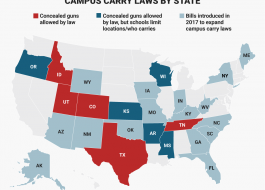
The growing learning relationship management market got a major new player this week as the University of Texas System announced it will further develop TEx, its homegrown learning platform, in partnership with business software provider Salesforce.
TEx, short for Total Education Experience, last year launched as a pilot in a competency-based degree program at the system’s Rio Grande Valley campus. When TEx 2.0 begins in fall 2017, it will have evolved to a personalized learning platform, a marketplace of courses and programs, and an academic record built on block-chain technology.
The system’s Institute for Transformational Learning, known as UTx, is leading the development effort. The system opened the institute in 2012 to serve as its innovation arm, exploring new ways to offer education and support to its increasingly diverse student body.
“These kinds of transformational moments are not going to come from the [billions] of ed-tech funding that’s coming from venture capital,” said Phil Komarny, chief digital officer at UTx. “These transformations have to happen from the inside.”
The system has previously described TEx as a “stack” of technologies and services. For the 2.0 version, the system plans to make that concept a reality.
TEx is first and foremost a learning platform, Komarny said. It gives faculty members across the system a platform where they can experiment with new models of education, as opposed to having to use systems that may not have been created with competency-based education or other alternative models in mind, he said.
For students, the key word is personalization. In a promotional video, the system pitches TEx as technology that lets students progress through programs at their own pace and along pathways they build with input from coaches and faculty members. During the pilot, for example, the platform powered a biomedical sciences program that let students access course materials and assessments on a tablet.
Personalization could also apply to administrative features such as course registration. The system has for more than a decade run the UT Online Consortium, a clearinghouse of the online courses and programs offered by its campuses. The system could use TEx to turn the clearinghouse into an online marketplace, Komarny said. Instead of students having to go to the website to look for online programs they find interesting, the platform could learn about students’ search habits -- like Amazon or Netflix -- and suggest courses that match their interests.
 The program could learn students' interests, like Netflix. Netflix
The program could learn students' interests, like Netflix. Netflix
In addition to the biomedical sciences program at the Rio Grande Valley campus, the system is preparing a cybersecurity program from the San Antonio campus to launch on TEx next fall. Other programs are scheduled for 2018, but Komarny declined to list them as details have yet to be worked out.
Since the long-term plan for TEx is to feature courses and programs from across the system, developers plan to let students track academic progress using block-chain technology, which stores transactions -- in this case, achievements such as credits and credentials -- in a digital ledger.
The system sees uses for the platform outside higher education as well, but will initially focus its attention on the university and the state, Komarny said.
Salesforce is working with the university system through Salesforce.org, its philanthropic arm. The nonprofit organization invests 1 percent of the company’s own equity, technology and workforce into education and workforce initiatives.
While Salesforce.org has worked with a number of universities to build its Higher Education Data Architecture and markets its traditional customer relationship management products to colleges, Allyson Fryhoff, senior vice president of sales, described its work with the Texas system -- building a learning relationship management system -- as the “next generation of partnerships.”
TEx 2.0 will be built on Salesforce’s platform, and the company’s own software engineers will help build the platform, Fryhoff said.
College leaders in general aren’t sure if Salesforce and other customer relationship management platforms designed for the private sector are the right fit for higher education and managing learning relationships, however. In a recent Eduventures study of more than 200 college leaders, two-thirds of respondents said they may require different technology than what traditional CRM systems provide.
“We would agree that the vanilla CRM doesn’t meet all the needs [of higher education],” Fryhoff said in an interview. “When we think about CRM, normally that stands for customer relationship management. At Salesforce.org, we think of it as constituent relationship management.”
Gunnar Counselman, whose company, Fidelis, provides learning relationship management software and consulting, said Salesforce's presence in the market will change it, though not necessarily for the better.
 Salesforce employees. Salesforce.com/Facebook
Salesforce employees. Salesforce.com/Facebook
“The reason that we chose not to build our LRM on Salesforce was that Salesforce makes it too easy to build a ‘salesy’ experience, and our perspective was that if the relationships feel like sales, they won't be developmental,” Counselman said in an email.
In an LRM, by comparison, the student is brought into the system, where they are able to collaborate with faculty members and advisers toward meeting their own goals, Counselman said. That requires more than technology, including mentoring and other support programs, which can be more challenging to build than software, he added.
Motivis Learning, an LRM provider whose software is built on Salesforce's platform, did not respond to a request for comment. The company spun off from Southern New Hampshire University's College for America two years ago.
Counselman said he is still excited to see if the Texas system can deliver on its promises. “This kind of effort is focused on exactly the right things, which is building coherent student experiences that involve relationships, goals, content, credentials and connectivity to the employment market,” he said.
Read the original article on Inside Higher Ed. Copyright 2016. Follow Inside Higher Ed on Twitter.




